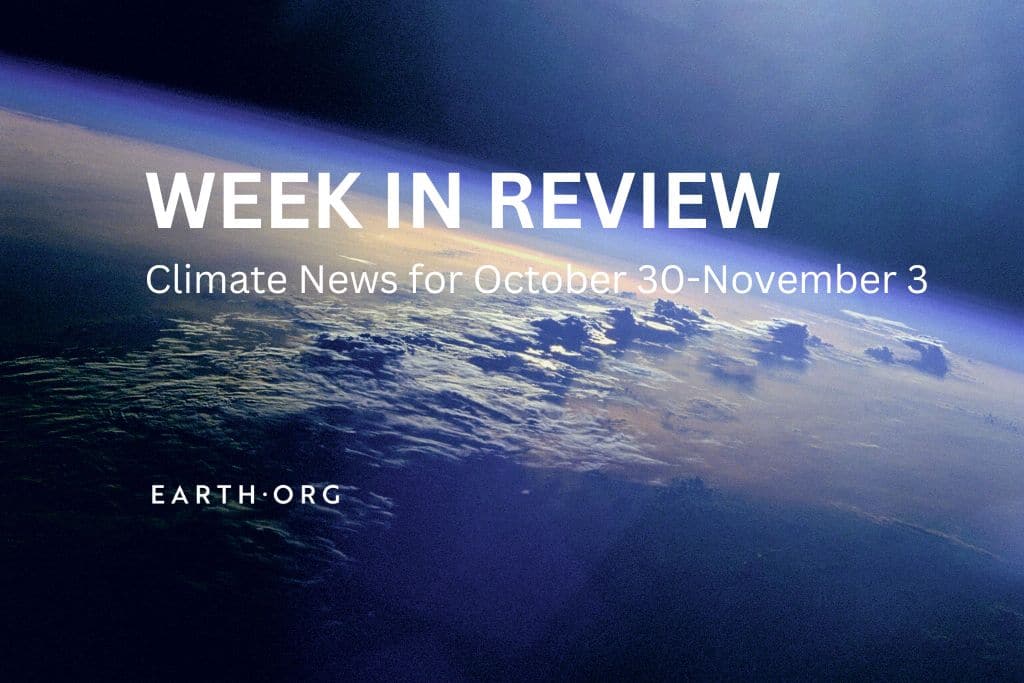This weekly round-up brings you key climate news from the past seven days, including the release of the highly-anticipated Adaptation Gap Report, new restrictions to conserve water in light of the Panama Canal drought, and growing concerns about a rapidly intensifying wildfire in California.
—
1. Record Ocean Temperatures Push World Climate and Marine Life Into Risk Zone, EU-Backed Study Shows
Published by Mercator Ocean International under the EU-funded Copernicus Marine Service, the seventh edition of the Ocean State Report (OSR 7) offers a multidimensional analysis of the current conditions as well as natural and anthropogenic changes in the European regional seas and the world’s oceans, covering aspects such as temperature, currents, biodiversity, and more.
The report found that marine heatwaves have become more frequent and intense both in the European regional seas and the global ocean with the exception of the Southern Ocean. At the same time, scientists observed a downward trend in the frequency and intensity of marine cold spells.
Read more here.
2. Carbon Budget to Limit Global Warming Below 1.5C Will Run Out In Six Years At Current Emissions Levels, New Paper Finds
Humanity has only six years left to get to net zero emissions and keep global warming below 1.5C, new estimates suggest.
The new study, published in the scientific journal Nature on Monday, assessed the size of the remaining carbon budget, the net amount of carbon dioxide (CO2) we have left to emit before we exceed our desired global temperature increases – in this case, 1.5C above pre-industrial levels, a threshold set by 195 governments in the 2015 Paris Agreement beyond which humanity will start experiencing severe climate damages across a wide range of ecosystems.
Researchers concluded that, if current emissions levels persist, humanity can emit another 250 gigatonnes of CO2 (GtCO2) for a 50-50 chance to reach the 1.5C limit in six years’ time, rather than in the mid 2030s as previously predicted. If the threshold is set at 2C, the amount of CO2 we can still emit is around 1,200 GtCO2.
Read more here.
3. Panama Canal Authority Cuts Ship Crossings Further as El Niño-Induced Drought Intensifies
Unprecedented low levels of rainfall in October have intensified a months-long drought that has impacted global trade, forcing the Panama Canal Authority (ACP) to further restrict ship crossings in the coming months.
The Panama Canal, currently in its rainy season, is experiencing extreme drought conditions and has so far this year seen some of its lowest water levels ever, with huge repercussions on the transportation and shipping of consumer goods and food supplies across the world. The situation deteriorated further after the region saw its driest October since monitoring began 73 years ago – with about 41% below average precipitation – making 2023 the second-driest year for the same period.
Read more here.
4. Current Adaptation Finance Gap At Least 50% Bigger than Thought, New UNEP Report Warns
Published Friday by the UN Environment Programme (UNEP), the leading global voice on the environment, the highly-anticipated Adaptation Gap Report 2023 suggests that the current adaptation finance gap – the difference between estimated adaptation financing needs and costs (US$215 billion to US$387 billion) and finance flows (US$21.3 billion) – is around US$194-366 billion per year until 2030, with finance needs for adaptation efforts in developing countries likely 10-18 times more than current international public finance flows.
According to the report, about 15% of the 194 Parties to the UN Framework Convention on Climate Change (UNFCCC) lack a national adaptation plan. Of the countries which have such mechanisms in place, just under half of them have revised or updated them and only about 25% of them have legal instruments in place that require national governments to take steps in terms of climate adaptation.
Read more here.
5. Fast-Moving Wildfire in Southern California Forces Thousands to Evacuate as Authorities Struggle to Contain Flames
A fast-moving Southern California wildfire has prompted authorities on Tuesday to issue evacuation orders for 4,000 people in Riverside County.
The Highland Fire broke out Monday afternoon near Highlands and Aguanga Ranchos roads, according to the Riverside County Fire Department, which issued an evacuation order for roughly 4,000 people. It nearly doubled in size overnight, fuelled by strong Santa Ana winds – seasonal winds that carry dusk and smoke from wildfires across the deserts and coastal regions of Southern California all the way to the Pacific Ocean.
Read more here.

















